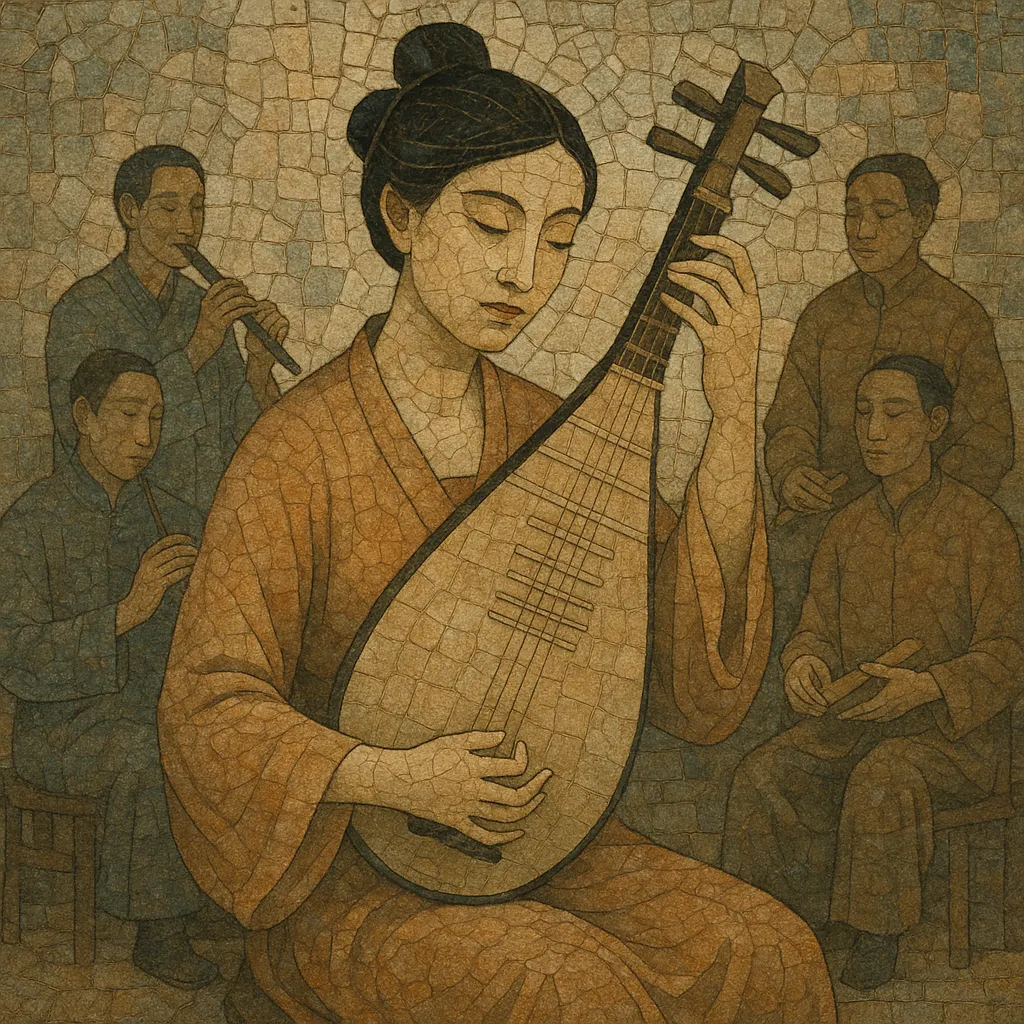Nanguan (also called Nanyin) is an elegant chamber music tradition from the Minnan (Southern Fujian) region that took root in Quanzhou and later flourished in Taiwan.
It features a soft, restrained vocal style in Hokkien (Minnan) and a small ensemble typically built around the nanguan pipa (a flat-backed, four‑string lute), dongxiao (end‑blown bamboo flute), erxian (two‑string bowed fiddle), sanxian (three‑string plucked lute), and paiban (wood clappers) to articulate the meter.
Melodies move in serene, unhurried arcs with delicate ornamentation, largely pentatonic modes (gong, shang, jue, zhi, yu) and subtle modal color tones. The repertory divides into refined lyric songs and instrumental suites, often using ancient qupai (fixed melodic models) and poetic texts. The result is intimate, meditative music famed for preserving archaic features of Tang–Song musical aesthetics.
Scholarly consensus places Nanguan’s roots in Han–Tang courtly and elite urban music that migrated south and crystallized in Quanzhou (Southern Fujian) during the Tang (7th–10th centuries) and Song (10th–13th centuries) periods. Its refined vocal delivery, modal thinking, and reliance on qupai (fixed tunes) reflect practices associated with literati and court circles.
Between the Song and Ming eras, amateur clubs in Quanzhou standardized instruments (pipa, dongxiao, erxian, sanxian, paiban) and codified repertoires into categories of lyric songs and instrumental suites. Written notation (gongche and later cipher/character variants) and lineage transmission helped stabilize style, ornamentation, and ensemble balance.
From the 17th century onward (late Ming–Qing), maritime migration brought Nanguan from Fujian to Taiwan. Temple associations and music societies (she/guan) in Tainan, Lukang, and later Taipei nurtured the tradition, performing for rituals, social gatherings, and refined leisure.
Despite urbanization, cultural policy and community associations in both Fujian and Taiwan revitalized Nanguan after mid‑century. Ensembles professionalized, recordings circulated internationally, and research/teaching programs emerged. Recognition of Nanyin (Nanguan) as a representative form of classical Minnan music and as intangible cultural heritage further spurred preservation, touring, and collaborations that retain traditional aesthetics while enabling careful contemporary presentation.


